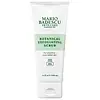What's inside
What's inside
 Key Ingredients
Key Ingredients

 Benefits
Benefits

 Concerns
Concerns

 Ingredients Side-by-side
Ingredients Side-by-side

Water
Skin ConditioningPhytelephas Aequatorialis Seed Powder
Propylene Glycol
HumectantCarbomer
Emulsion StabilisingSodium Laureth Sulfate
CleansingTriethanolamine
BufferingCamellia Sinensis Leaf Extract
AntimicrobialCocos Nucifera Fruit Extract
EmollientGinkgo Biloba Leaf Extract
Skin ConditioningZingiber Officinale Root Extract
MaskingAloe Barbadensis Leaf Juice
Skin ConditioningCaprylyl Glycol
EmollientHexylene Glycol
EmulsifyingPhenoxyethanol
PreservativeParfum
MaskingWater, Phytelephas Aequatorialis Seed Powder, Propylene Glycol, Carbomer, Sodium Laureth Sulfate, Triethanolamine, Camellia Sinensis Leaf Extract, Cocos Nucifera Fruit Extract, Ginkgo Biloba Leaf Extract, Zingiber Officinale Root Extract, Aloe Barbadensis Leaf Juice, Caprylyl Glycol, Hexylene Glycol, Phenoxyethanol, Parfum
Water
Skin ConditioningHydrated Silica
AbrasivePropylene Glycol
HumectantGlycerin
HumectantCocamidopropyl Betaine
CleansingSodium Laureth Sulfate
CleansingTriethanolamine
BufferingCarbomer
Emulsion StabilisingPhenoxyethanol
PreservativeSodium Chloride
MaskingSodium Benzoate
MaskingChlorphenesin
AntimicrobialDisodium EDTA
Aloe Barbadensis Leaf Juice Powder
Skin ConditioningTocopheryl Acetate
AntioxidantIngredients Explained
These ingredients are found in both products.
Ingredients higher up in an ingredient list are typically present in a larger amount.
Carbomer is a polymer of acrylic acid. Its main role is to create a gel consistency.
A high amount of carbomer can cause pilling or balling up of products. Don't worry, most products contain 1% or less of carbomer.
Phenoxyethanol is a preservative that has germicide, antimicrobial, and aromatic properties. Studies show that phenoxyethanol can prevent microbial growth. By itself, it has a scent that is similar to that of a rose.
It's often used in formulations along with Caprylyl Glycol to preserve the shelf life of products.
Propylene Glycol is an odorless, colorless liquid. As a humectant, it helps skin retain moisture. It also aids in delivering active ingredients.
Another role of this ingredient is preventing a product from melting or freezing. Propylene glycol also adds antimicrobrial properties to a product, elongating product lifespan.
This ingredient is considered an organic alcohol and commonly added into both cosmetics and foods.
Those with sensitive skin or conditions may develop a rash when using this ingredient.
Learn more about Propylene GlycolSodium Laureth Sulfate (SLES) is a foaming, cleansing, and emulsifying ingredient. It is created from palm kernel oil or coconut oil. SLES is not the same as sodium lauryl sulfate. It is much milder and less likely to irritate.
SLES helps create foam in personal products. It also prevents ingredients from separating, helping to elongate the shelf life.
Sodium Laureth Sulfate is a type of sulfate. It can be drying. We recommend speaking with a professional about using this ingredient if you have concerns.
Learn more about Sodium Laureth SulfateTriethanolamine is an emulsifier and pH adjuster. It is created using ethylene oxide and ammonia. This gives Triethanolamine a nitrogen core and a similar scent to ammonia.
As an emulsifier, it prevents ingredients from separating and enhances texture by adding volume to a product.
PH adjusters are common in cosmetic products. The pH of a product can affect the effectiveness of other ingredients. A product with a high pH may also irritate the skin.
Learn more about TriethanolamineWater. It's the most common cosmetic ingredient of all. You'll usually see it at the top of ingredient lists, meaning that it makes up the largest part of the product.
So why is it so popular? Water most often acts as a solvent - this means that it helps dissolve other ingredients into the formulation.
You'll also recognize water as that liquid we all need to stay alive. If you see this, drink a glass of water. Stay hydrated!
Learn more about Water